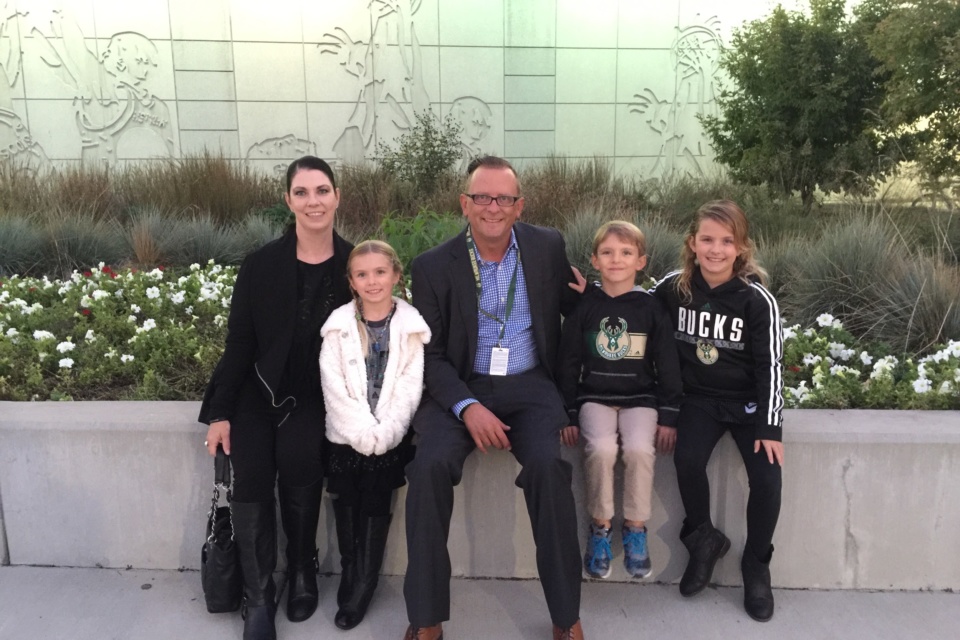RUN’s Journey
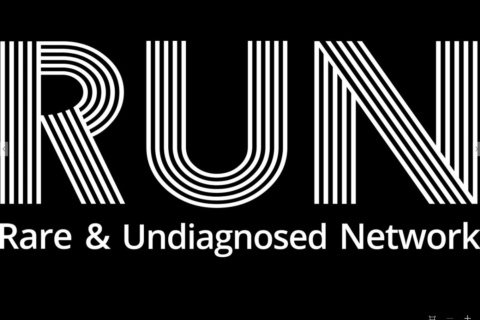
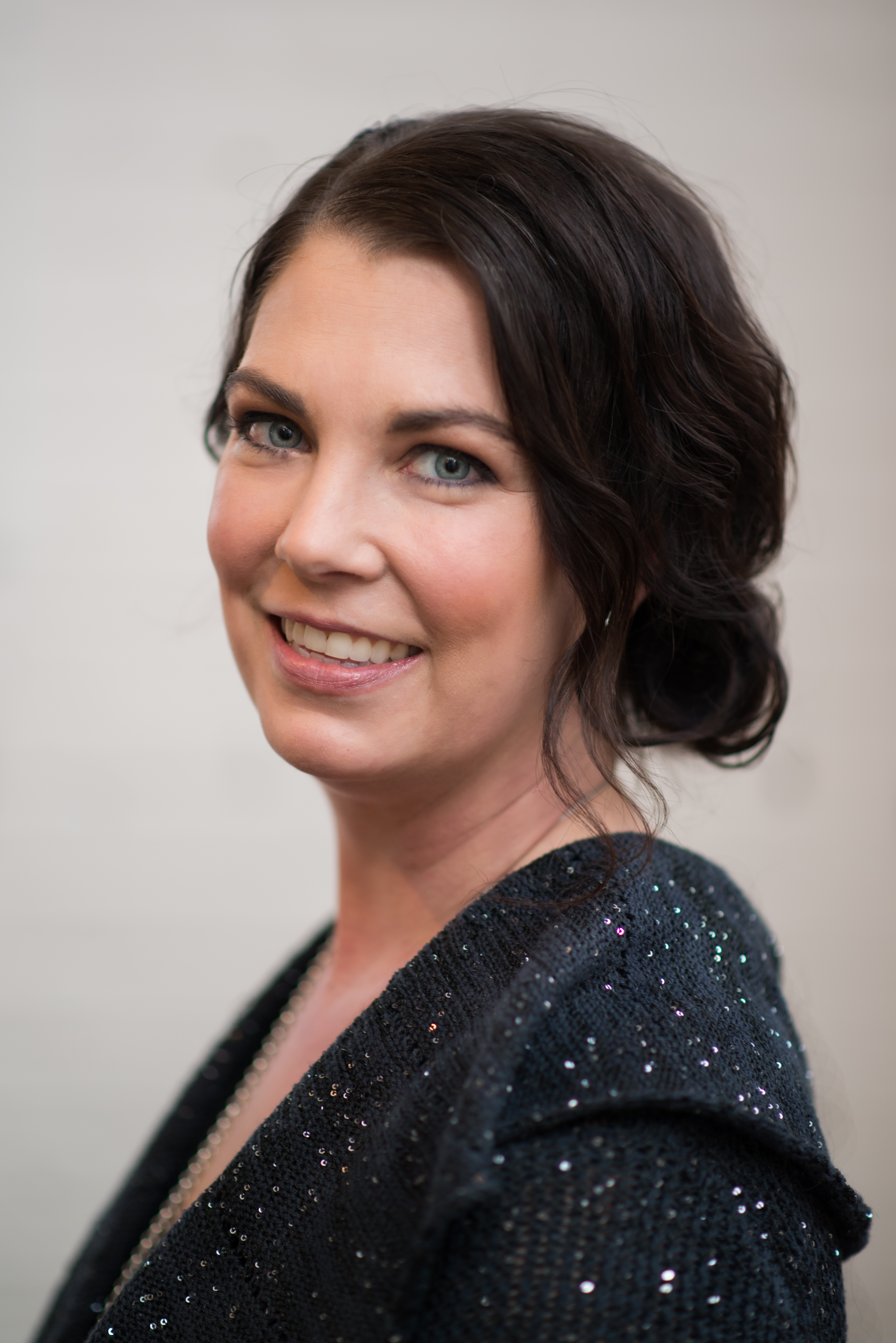
 My name is Gina Szajnuk and I am the mother of three children with an undiagnosed genetic dysfunction. I am also undiagnosed. We live in a diagnostic odyssey times four. Since the beginning of our journey, we have been to eight hospitals in now five states. We are diagnosed as having an undiagnosed rare disease.
My name is Gina Szajnuk and I am the mother of three children with an undiagnosed genetic dysfunction. I am also undiagnosed. We live in a diagnostic odyssey times four. Since the beginning of our journey, we have been to eight hospitals in now five states. We are diagnosed as having an undiagnosed rare disease.
Our diagnostic journey began when my oldest daughter, Ava, was three years old. She had a bump on her head that bothered me. I went to my pediatrician at the time and asked him about it. He ignored my concerns for almost six months. I went back in a final time and pushed hard for a referral to a neurologist. He sent us to a neurosurgeon just to placate me. He was actually surprised that the neurosurgeon even ordered a MRI. The MRI showed that Ava had a large arachnoid cyst. I remember it like it was yesterday. I was so scared about her future and I jumped into researching every single thing about arachnoid cysts. We learned that people can live their entire lives and not even know they have one. The neurosurgeon explained to us that we should do nothing at this time because her brain and the arachnoid cyst were happy neighbors. He suggested that she should not plan on playing any ball sports such as soccer, basketball, volleyball or softball. He suggested that she never ride a horse or snow ski. He told us that she should have a MRI every year for the next few years. This was our first introduction into the world of the unknown. Will she live her entire life just fine with the arachnoid cyst or will she die at an early age from the arachnoid cyst rupturing? I wish we could go back to the time when Ava just had an arachnoid cyst.
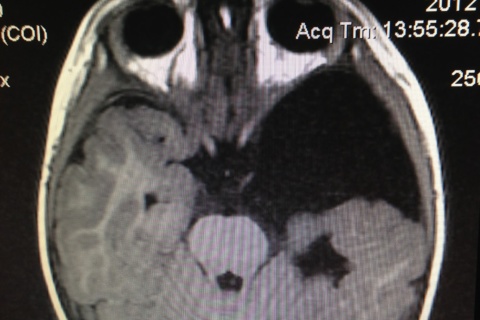 Our diagnostic journey continued on with Ava in that she started to have these incredible red hands and it spread to her legs, her face and her torso. We took her to five hospitals in three states to try to find answers. She was in pain daily and she fatigued quickly. We went to a neurologist in Chicago that told us to just accept the “unknown.” She told me to read a book written by a mother that has a twenty-four year old son that was undiagnosed. I was not going to accept her advice. I moved on to the Mayo Clinic in Rochester. When we met with the specialists there, Ava received the diagnosis of an undiagnosed autonomic neuropathy. An autonomic neuropathy is everything your body does naturally like digestion, breathing, heart rate and temperature control. We soon learned that both her younger two siblings had the same undiagnosed autonomic neuropathy, a genetic dysfunction. Our diagnostic journey was now expanding into a diagnostic odyssey times three.
Our diagnostic journey continued on with Ava in that she started to have these incredible red hands and it spread to her legs, her face and her torso. We took her to five hospitals in three states to try to find answers. She was in pain daily and she fatigued quickly. We went to a neurologist in Chicago that told us to just accept the “unknown.” She told me to read a book written by a mother that has a twenty-four year old son that was undiagnosed. I was not going to accept her advice. I moved on to the Mayo Clinic in Rochester. When we met with the specialists there, Ava received the diagnosis of an undiagnosed autonomic neuropathy. An autonomic neuropathy is everything your body does naturally like digestion, breathing, heart rate and temperature control. We soon learned that both her younger two siblings had the same undiagnosed autonomic neuropathy, a genetic dysfunction. Our diagnostic journey was now expanding into a diagnostic odyssey times three.
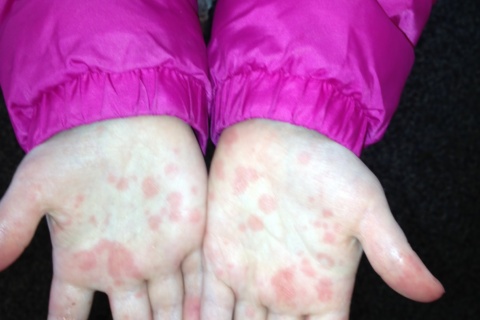
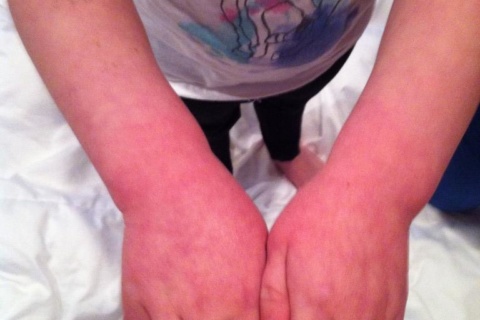 Ava was cleared by her neurosurgeon at age five for another three years during April, 2013. A few days later on May 3rd, Ava hit her head during a pillow fight with a babysitter. She started to have intense headaches and she would scream like a wild animal. We asked for another MRI and she finally had one seven days later on May 10th, 2013. The MRI showed that her arachnoid cyst was still stable after she hit her head. However, she was still screaming in pain or in too much pain to even speak. She would sit on her pink beanbag for hours and just stare at her new puppy we bought her to try cheer her up.
Ava was cleared by her neurosurgeon at age five for another three years during April, 2013. A few days later on May 3rd, Ava hit her head during a pillow fight with a babysitter. She started to have intense headaches and she would scream like a wild animal. We asked for another MRI and she finally had one seven days later on May 10th, 2013. The MRI showed that her arachnoid cyst was still stable after she hit her head. However, she was still screaming in pain or in too much pain to even speak. She would sit on her pink beanbag for hours and just stare at her new puppy we bought her to try cheer her up.
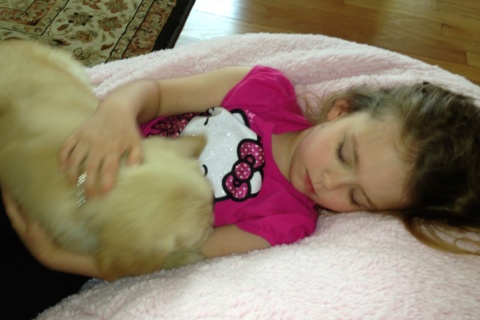 She did not attend school in May and we were running out of options. We went to four different neurologists in Illinois, Minnesota and Wisconsin and begged for something to help with her pain. We tried several medications and tortured Ava several times daily by forcing her to drink them.
She did not attend school in May and we were running out of options. We went to four different neurologists in Illinois, Minnesota and Wisconsin and begged for something to help with her pain. We tried several medications and tortured Ava several times daily by forcing her to drink them.
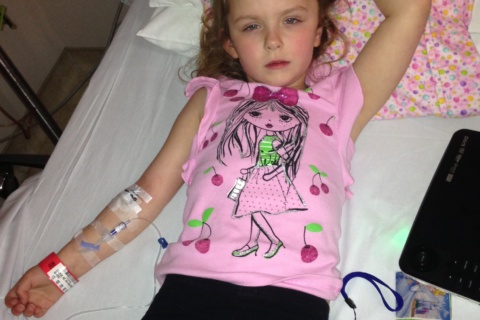 She spent her sixth birthday at the Mayo Clinic having a Toradol IV/IM (ketorolac). It did not help take the pain away. We were then told to “take her around the block for a walk to reset her neurotransmitters.”
She spent her sixth birthday at the Mayo Clinic having a Toradol IV/IM (ketorolac). It did not help take the pain away. We were then told to “take her around the block for a walk to reset her neurotransmitters.”
We were very frustrated and returned to Illinois. In the weeks that followed, we were sent home from the emergency room (ER) around eight times with Tylenol and a note in her file saying, “No need for further testing.”
On Thursday, July 13th, 2013, we were desperate and finally took her to yet another hospital in Wisconsin, Children’s Hospital of Wisconsin. We were begging for help. They called the neuro team down to the ER. The neurologist told us that they did not do consults in the ER and that we should come back on Tuesday. My husband, Justin Zanik, and I refused to leave. The ER doctor agreed to keep her a few more hours based on the level of pain she was in at the time. Ava began to complain that she could not see anymore and that her spine in her neck was hurting. She ended up having papilledema (or papilloedema). This is when there is an optic disc swelling that is caused by increased intracranial pressure. They agreed to admit her and planned to have a MRI, MRA, MRV and a lumbar puncture the next morning.
Ava screamed like a wild animal all night long. They gave her the following pain medicine in this order: Toradol, Compazine, Benadryl, Valproic Acid, Valium, Valproic Acid
None of the above medicines took her pain away. At 4:30a, they gave her Morphine. She finally fell asleep for two hours. I videod her all night long. I did not video her because I thought I would share it later but because I thought she was going to die.
Ava ended up having a subdural hygroma and endured four cranial surgeries. She is now shunt-dependent. We spent six weeks in the hospital. If my husband and I would not have advocated for our daughter, she would have been blind and most likely dead.
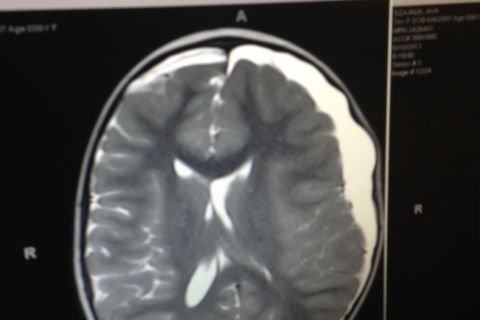
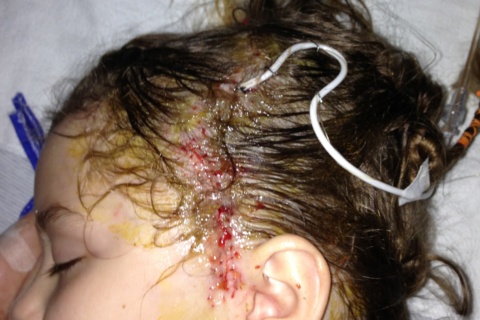 This experience with Ava, changed our path in life. This gave me a mission. I needed to help other families advocate for themselves. I never wanted another family to go through the pain and suffering that we went through with Ava. I wanted to empower other mothers and let them know that the doctor is not always right. A parent knows when there is something wrong with their child. You need to stand up for yourself when no one listens to you. You must keep pushing on the medical system for help. You must continue to find the one doctor that can help you.
This experience with Ava, changed our path in life. This gave me a mission. I needed to help other families advocate for themselves. I never wanted another family to go through the pain and suffering that we went through with Ava. I wanted to empower other mothers and let them know that the doctor is not always right. A parent knows when there is something wrong with their child. You need to stand up for yourself when no one listens to you. You must keep pushing on the medical system for help. You must continue to find the one doctor that can help you.
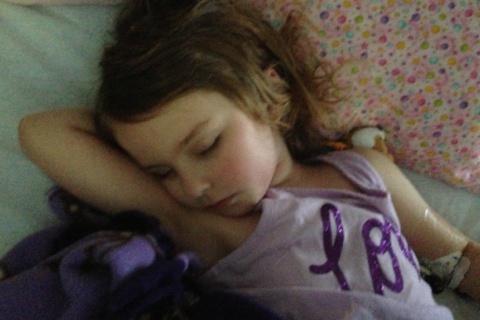 After we were released from the hospital, my husband accepted a job in Utah with the NBA Utah Jazz. We moved there during the fall of 2013. Our lives changed drastically and we had to start over with our medical team. We were very blessed to be in a city with one of the top adult hospitals, University Hospital, as well as one of the top children’s hospitals in the country, Intermountain Primary Children’s Hospital. We set up our specialists and met with an incredible genetics team. The team back in Wisconsin continued to care for us as well. We now had two hospitals focusing on our genetics and our care. Our team in Wisconsin had our whole exome sequencing (WES) done clinically and covered by our insurance for a “quint analysis,” which is where they sequenced our family of five but only analyzed Ava. We fought for over a year to get this approved through our insurance. We had tried for whole genome sequencing (WGS) and we were denied. We tried for WES to be analyzed for all five of us and we were denied. What the quint analysis told me from the insurance company that Ava’s life was more important than Oskar’s life and Lucy’s life.
After we were released from the hospital, my husband accepted a job in Utah with the NBA Utah Jazz. We moved there during the fall of 2013. Our lives changed drastically and we had to start over with our medical team. We were very blessed to be in a city with one of the top adult hospitals, University Hospital, as well as one of the top children’s hospitals in the country, Intermountain Primary Children’s Hospital. We set up our specialists and met with an incredible genetics team. The team back in Wisconsin continued to care for us as well. We now had two hospitals focusing on our genetics and our care. Our team in Wisconsin had our whole exome sequencing (WES) done clinically and covered by our insurance for a “quint analysis,” which is where they sequenced our family of five but only analyzed Ava. We fought for over a year to get this approved through our insurance. We had tried for whole genome sequencing (WGS) and we were denied. We tried for WES to be analyzed for all five of us and we were denied. What the quint analysis told me from the insurance company that Ava’s life was more important than Oskar’s life and Lucy’s life.
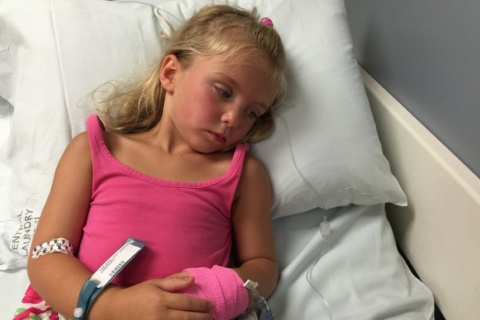
 However, we were very happy to get our family sequenced through the Children’s Hospital of Wisconsin and we were blessed to have been able to keep our data. The lab sent us five thumbdrives with our WES data on them.
However, we were very happy to get our family sequenced through the Children’s Hospital of Wisconsin and we were blessed to have been able to keep our data. The lab sent us five thumbdrives with our WES data on them.
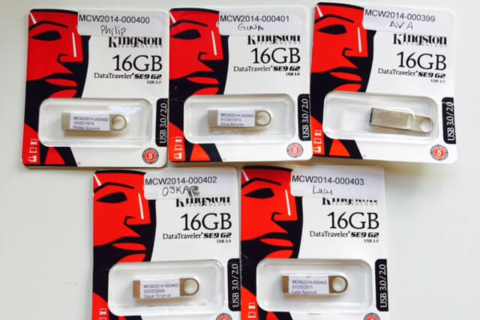
This was an incredible win for us as we were then able to share the data with five other groups to be analyzed – Tute Genomics, Rare Genomics Institute, Utah Genome Project, MyGene2 and the Undiagnosed Disease Network (UDN). Our journey came out of the four walls of the hospitals and into the world of genetics.
We were now on a diagnostic odyssey times four – Ava, Oskar, Lucy and me. Through this journey with the children, my health deteriorated drastically. We have seen over one hundred specialists. We have a constellation of symptoms that range from eosinophilic esophagitis (EOE), temperature intolerance, fatigue, pain, motility issues, dysautonomia, severe aggressive progressive osteoarthritis, small fiber polyneuropathy and many more. Unfortunately, we did not find an answer through our WES so our next mission was to have whole genome sequencing (WGS) done for our family and for my parents.
We have had our WGS and analyzed already by the Utah Genome Project at the University of Utah as well as by the Undiagnosed Disease Network (UDN). We are so very thankful to have been accepted into the UDN, a research study that is funded by the National Institutes of Health Common Fund , this past year and to be working with their team in the UCLA Human Genetics at David Geffen School of Medicine at UCLA.
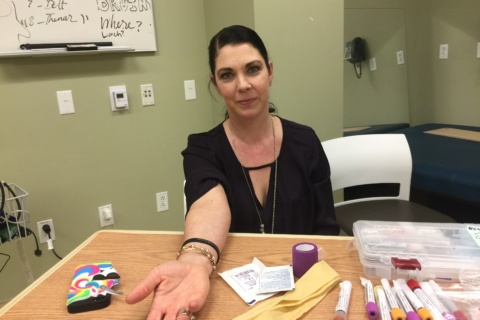
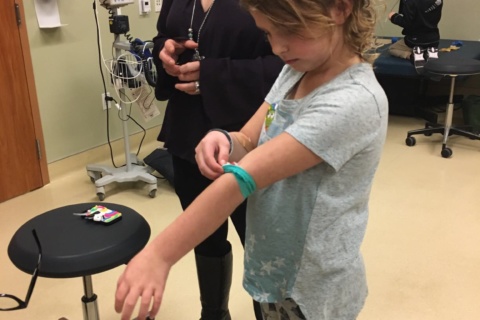
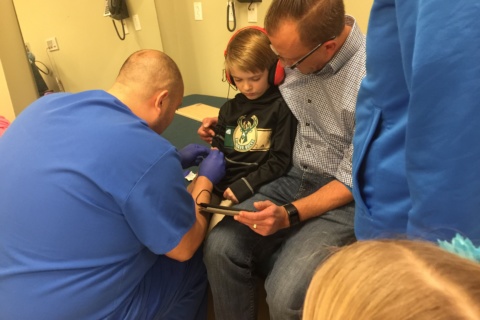
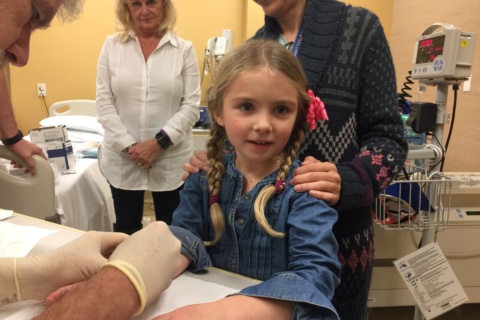 We are also going to be working with MyGene 2 and the University of Washington Center for Mendelian Genomics (UW-CMG). They will be analyzing our WGS as well. They sent us saliva collection kits to our home recently and we sent them back. It was incredible to be able to do it from our home and without drawing blood. We look forward to seeing their results as well.
We are also going to be working with MyGene 2 and the University of Washington Center for Mendelian Genomics (UW-CMG). They will be analyzing our WGS as well. They sent us saliva collection kits to our home recently and we sent them back. It was incredible to be able to do it from our home and without drawing blood. We look forward to seeing their results as well.
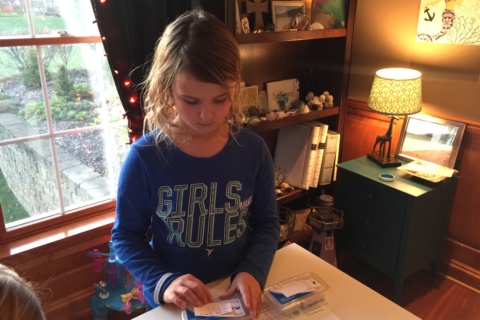 The children still suffer daily in pain and they miss a lot of school. Their only medicine is distraction. They are cognitively doing great but they have these bodies that do not work correctly. They persevere and are such an inspiration to me. They tell jokes and laugh often. They love their extended family and their friends. You only have one body in your lifetime. You have no choice except to fight for yourself and for your future. My three children have taught me to keep fighting for a diagnosis, a cure and a treatment. I want it for me as well. As a mother living with pain daily, I am scared for my future. I know what it feels like to feel just horrible. I lived my first thirty-four years as a healthy young woman. I was perfectly healthy. When I gave birth to Ava, my body changed. When I went through the stress of Ava’s four cranial surgeries and our move to Utah, my disease process progressed drastically. I just feel blessed to still have my Ava with me and that we have a very blessed opportunity to keep fighting for answers for all four of us and for all of the rare and undiagnosed community. This journey inspired me to do more. Much more.
The children still suffer daily in pain and they miss a lot of school. Their only medicine is distraction. They are cognitively doing great but they have these bodies that do not work correctly. They persevere and are such an inspiration to me. They tell jokes and laugh often. They love their extended family and their friends. You only have one body in your lifetime. You have no choice except to fight for yourself and for your future. My three children have taught me to keep fighting for a diagnosis, a cure and a treatment. I want it for me as well. As a mother living with pain daily, I am scared for my future. I know what it feels like to feel just horrible. I lived my first thirty-four years as a healthy young woman. I was perfectly healthy. When I gave birth to Ava, my body changed. When I went through the stress of Ava’s four cranial surgeries and our move to Utah, my disease process progressed drastically. I just feel blessed to still have my Ava with me and that we have a very blessed opportunity to keep fighting for answers for all four of us and for all of the rare and undiagnosed community. This journey inspired me to do more. Much more.
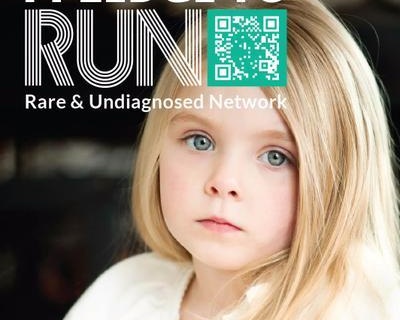 During the summer of 2014, I co-founded the Rare and Undiagnosed Network (RUN). RUN’s mission is to empower rare and undiagnosed patients and their families with genomic information and community through advocacy, networking and support. RUN is a platform for families to share their journey and gives them a sense of community so they do not feel alone. RUN works with all rare and undiagnosed families. RUN started out as a grassroots organization but has filled a void for families living in the world of the unknown or suffering through a diagnostic odyssey. RUN saved my life when I was slipping away into the darkness. RUN gave me a platform for my voice and for my mission.
During the summer of 2014, I co-founded the Rare and Undiagnosed Network (RUN). RUN’s mission is to empower rare and undiagnosed patients and their families with genomic information and community through advocacy, networking and support. RUN is a platform for families to share their journey and gives them a sense of community so they do not feel alone. RUN works with all rare and undiagnosed families. RUN started out as a grassroots organization but has filled a void for families living in the world of the unknown or suffering through a diagnostic odyssey. RUN saved my life when I was slipping away into the darkness. RUN gave me a platform for my voice and for my mission.
RUN has been on an incredible journey of it’s own. It has turned into something bigger than I ever imagined. I met my first RUN family randomly at a Tim McGraw concert. Megan Nuffer and Melissa Sills were sitting next to us. We enjoyed the concert together and I gave her Megan my brand new business card when we left. A few days later, Megan emailed me about her sister, Katie Nuffer. Katie suffers from hereditary multiple exostoses(MHE). Katie, Megan and Melissa became instant RUN family.
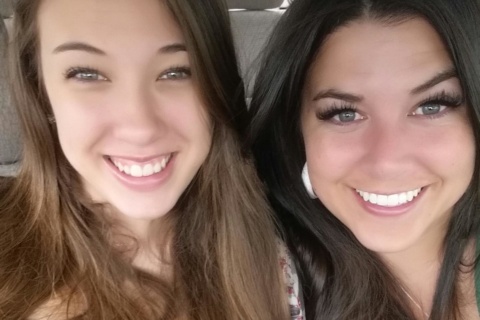
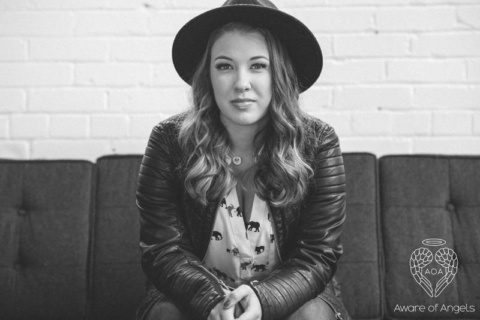 A few weeks later, we were celebrating Bertrand Might’s birthday at a NBA Utah Jazz game through my husband’s connection as the Assistant General Manager. Bertrand was the first child in the world discovered to have a NGLY1 deficiency.
A few weeks later, we were celebrating Bertrand Might’s birthday at a NBA Utah Jazz game through my husband’s connection as the Assistant General Manager. Bertrand was the first child in the world discovered to have a NGLY1 deficiency.
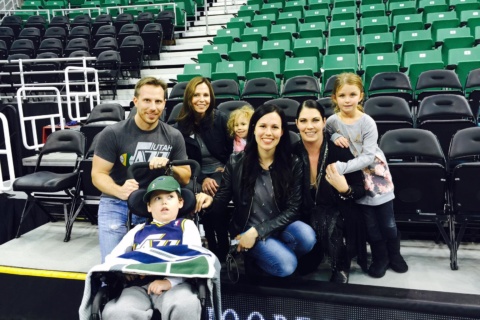 At the game, we met Harlie Valdez and her family. It was again completely random but we became instant RUN family.
At the game, we met Harlie Valdez and her family. It was again completely random but we became instant RUN family.
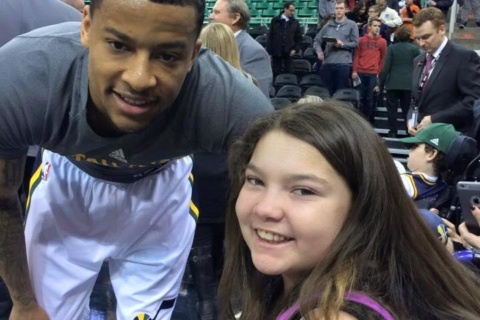
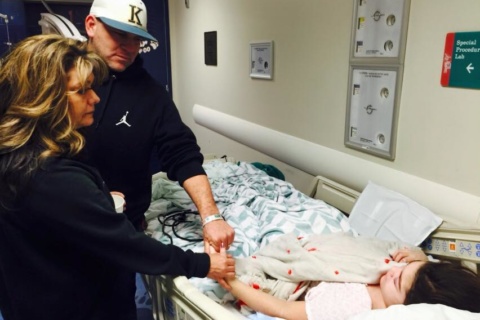
Harlie suffers from juvenile dermatomyositis (JDM) and lived at Intermountain Primary Children’s Hospital for over a year. RUN followed her journey along with Help for Harlie.
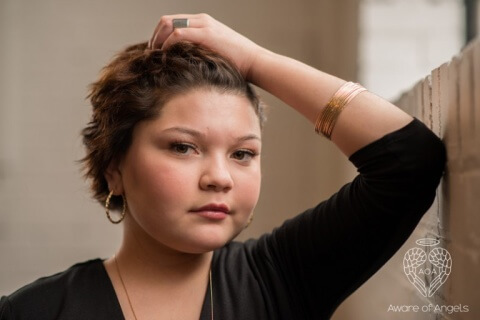 This rare and undiagnosed family grew so fast over the next year across the country.
This rare and undiagnosed family grew so fast over the next year across the country.
Since there are an estimated 290,000 Utahns with a rare disease we created Utah Rare based on Cristina Might’s, Bertrand’s mother, vision to have a coalition of rare disease stakeholders coming together to raise awareness for Rare Disease Day® on the last day of February. We offered a free symposium through the University of Utah and organized the Utah Rare State House event. The National Organization for Rare Disorders (NORD) trademarked the day in the United States and we supported their mission. Together, we are raising awareness for the 1 in 10 people suffering from a rare disease in the United States, more than 350 million people worldwide. Approximately 50% of the people affected by rare disease are children and 30% of those children not live to see their 5th birthday. There are more Americans who live with a rare disease than ALL of those who have either HIV, Heart Disease or Stroke.
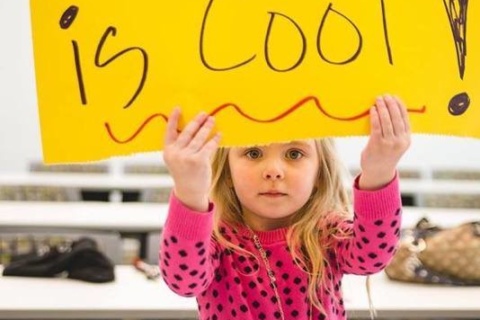
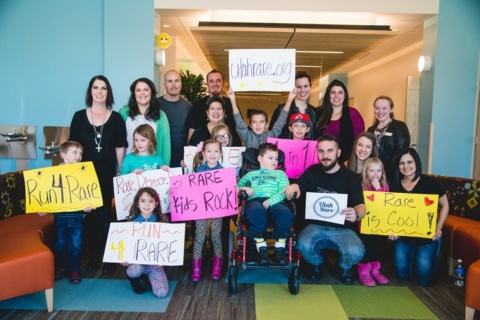 Utah Rare also had a Rare Teen Photography Project with Season Atwater of Aware of Angels. Season captured the strength and beautiful of twelve of our rare and undiagnosed rare teens. She brought them out of their shyness and into the world of strength, inspiration and beauty. She gave confidence to the teenagers that often get bullied at school for being different. She gave them a life-changing experience and bonded them for life.
Utah Rare also had a Rare Teen Photography Project with Season Atwater of Aware of Angels. Season captured the strength and beautiful of twelve of our rare and undiagnosed rare teens. She brought them out of their shyness and into the world of strength, inspiration and beauty. She gave confidence to the teenagers that often get bullied at school for being different. She gave them a life-changing experience and bonded them for life.
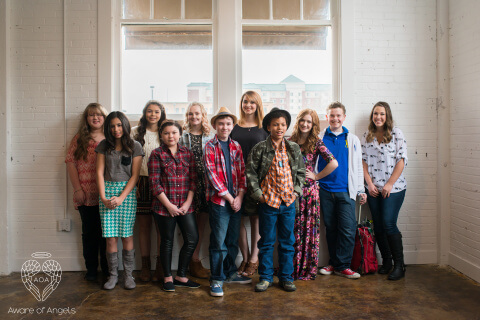 Again through my husband’s job within the NBA, we worked with several teams the past two years to raise awareness through the NBA for the rare community. We were blessed to have our rare families represented on the NBA courts for their National Anthems and we were donated tickets so they could attend the games.
Again through my husband’s job within the NBA, we worked with several teams the past two years to raise awareness through the NBA for the rare community. We were blessed to have our rare families represented on the NBA courts for their National Anthems and we were donated tickets so they could attend the games.
February 28th, 2015
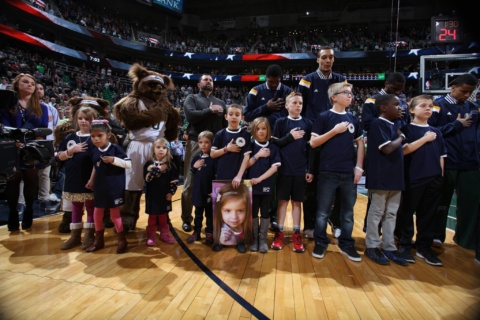
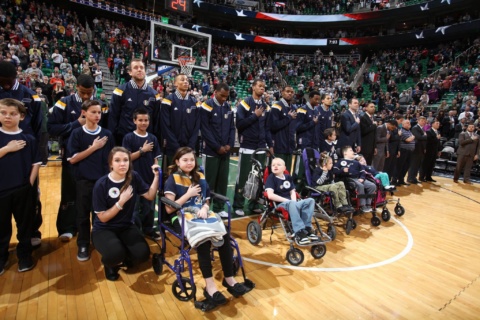 February, 29th, 2016
February, 29th, 2016
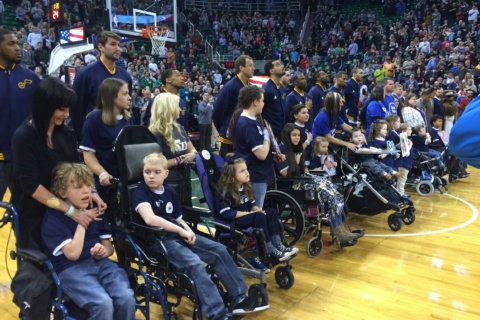 In 2016, I focused the majority of my energy on raising awareness for the rare community as a whole. We wanted everyone to understand how physically, emotionally and financially hard it is to live with a rare disease. It was a very successful year. In 2016, seven NBA teams honored the rare community. The EveryLife Foundation for Rare Diseases recognized RUN for a Rare Voice Award and RUN also accepted the Rare Champion of Hope – Advocacy Award from Global Genes. It was a humbling experience and such an honor for my entire family.
In 2016, I focused the majority of my energy on raising awareness for the rare community as a whole. We wanted everyone to understand how physically, emotionally and financially hard it is to live with a rare disease. It was a very successful year. In 2016, seven NBA teams honored the rare community. The EveryLife Foundation for Rare Diseases recognized RUN for a Rare Voice Award and RUN also accepted the Rare Champion of Hope – Advocacy Award from Global Genes. It was a humbling experience and such an honor for my entire family.
In 2017, my focus will be more on helping the undiagnosed rare disease community raise awareness for their struggles of living in a diagnostic odyssey. It is time to make bigger changes for all of the rare community but especially for the undiagnosed rare disease community.
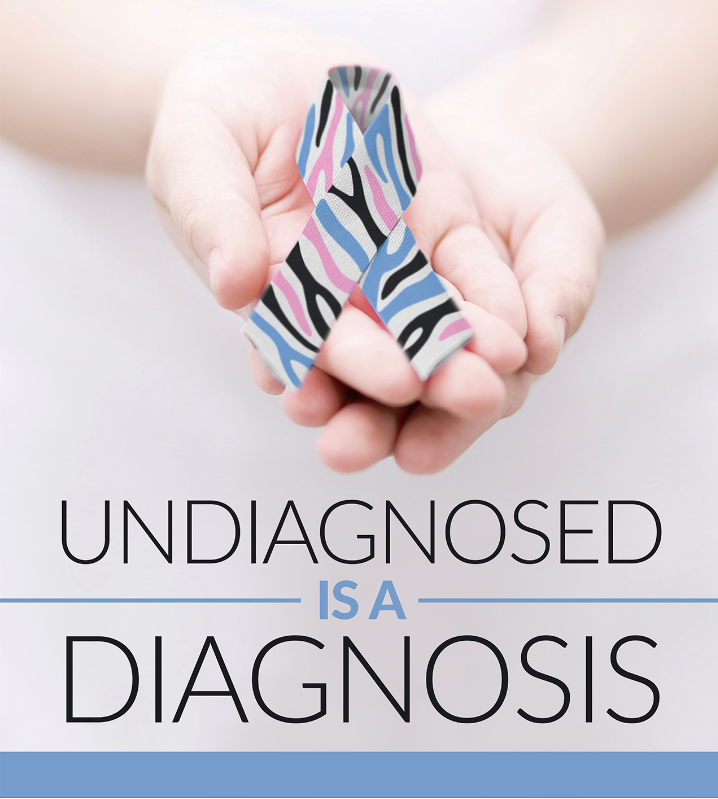 Rachel Nielsen, Undiagnosed Rare Disease
Rachel Nielsen, Undiagnosed Rare Disease
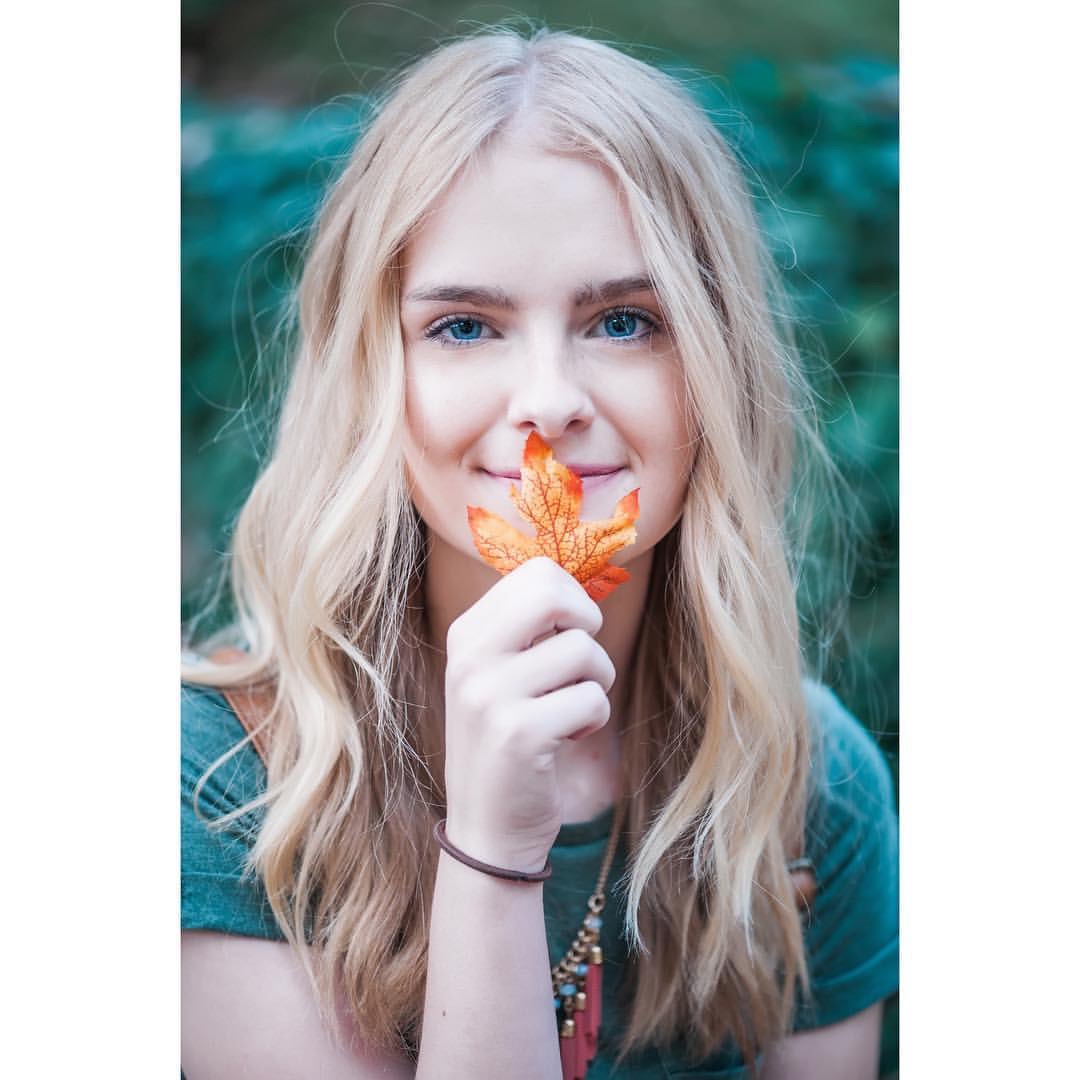 “Please don’t write me off or tell me it’s all in my head simply because you don’t have answers for me. I came to the doctor’s because I wanted help. Let’s work together to get me that help. I would rather a doctor tell me they don’t have answers than to blame my problems on me. Nothing hurts more than to have your life stolen from you and all hope lost, just to have a medical professional tell you it’s all in your head. I have a feeding disorder/disease, not an eating disorder. They should be treated very differently. Do not confuse the two.” – Rachel Nielsen
“Please don’t write me off or tell me it’s all in my head simply because you don’t have answers for me. I came to the doctor’s because I wanted help. Let’s work together to get me that help. I would rather a doctor tell me they don’t have answers than to blame my problems on me. Nothing hurts more than to have your life stolen from you and all hope lost, just to have a medical professional tell you it’s all in your head. I have a feeding disorder/disease, not an eating disorder. They should be treated very differently. Do not confuse the two.” – Rachel Nielsen
Calen Forsythe, Undiagnosed Rare Disease
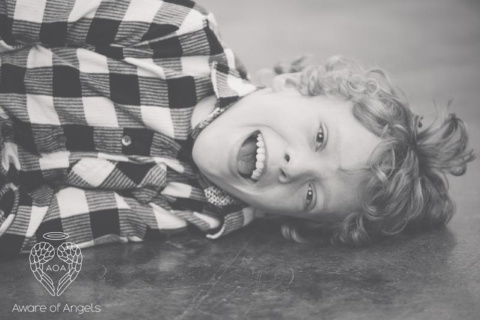 “Calen is nearly 16 years old. The only thing he’s been “diagnosed” with is developmental delay and a chromosomal abnormality, the latter which was determined at age 11 via chromosomal microarray. However, very little is still understood about how the chromosomal abnormality relates to his condition, and more importantly his prognosis. As parents, answers are our lifeblood. Genomic sequencing can provide these answers, giving us insights into how we can better care for our son medically throughout his life. We believe genomic sequencing should be standard of care for our son and all undiagnosed children.” -Josh Forsythe, father
“Calen is nearly 16 years old. The only thing he’s been “diagnosed” with is developmental delay and a chromosomal abnormality, the latter which was determined at age 11 via chromosomal microarray. However, very little is still understood about how the chromosomal abnormality relates to his condition, and more importantly his prognosis. As parents, answers are our lifeblood. Genomic sequencing can provide these answers, giving us insights into how we can better care for our son medically throughout his life. We believe genomic sequencing should be standard of care for our son and all undiagnosed children.” -Josh Forsythe, father
Hailey Sampsel, Undiagnosed Rare Disease
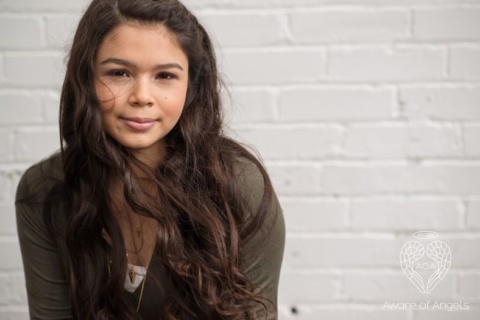 “To have someone say that they don’t know or that they think your pain is all in your head is so hard. You feel like you constantly have to prove yourself to them. You feel crazy and worthless. It makes you feel hopeless and that’s a feeling no one should feel when they are in pain.” – Hailey Samspel
“To have someone say that they don’t know or that they think your pain is all in your head is so hard. You feel like you constantly have to prove yourself to them. You feel crazy and worthless. It makes you feel hopeless and that’s a feeling no one should feel when they are in pain.” – Hailey Samspel
Through RUN’s journey, we have met so many incredible people. During the spring of 2015, I met Peter Coleman and Peter Busch. They heard me speak at our 1st Inaugural Utah Rare Disease Symposium. When they listened about our struggles of living in a diagnostic odyssey, they were fascinated to learn more and to see how they could help to improve the lives of the many families living with the same struggles. We started to discuss a platform that could bring everyone in the rare community together to create, connect, explore and discover. Together, we created RUNmyDNA.com. RUNmyDNA will change the way families live in the world of the unknown. This is the action we need to reshape the way we research, discover and diagnose our loved ones. Imagine what could happen if the six core communities in the globally shared diagnostic odyssey had a place to collaborate, together.
 This is my hope for the future. We will be launching it soon and I am so excited to be on this journey for change.
This is my hope for the future. We will be launching it soon and I am so excited to be on this journey for change.
When I reflect on the past few years, I try to stay positive. When asked what is the silver lining for me and for our family, it is the friends we have made along the way. As I always say, I have my family and I have my rare family. I would not trade my friendships for anything. My rare sisters and brothers have walked this walk with me every step of the way just as my family has had to do. We have created a group of young teenagers and young children that will grow up together in this fight. They now know that they are not alone and that their parents have other parents to pick them up when they cannot take another step. We are all in this together and we need one another more than ever. Ava, Oksar and Lucy have rare sisters and brothers that will be there for them forever. If there is one thing I can tell other families just starting out on a diagnostic odyssey, it is that you are not alone. It is not going to be an easy road but you have an instant family and we will fight for you. We will guide you as much as we can and we will pick you up when you fall down. Our love for you and your family will be there forever and our rare angels will be there to guide you as well.
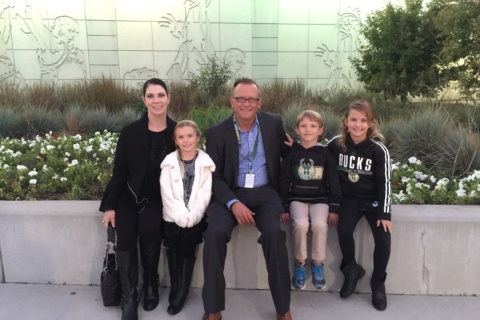 For more on the Szajnuk’s journey, please visit www.rareundiagnosed.org.
For more on the Szajnuk’s journey, please visit www.rareundiagnosed.org.
About Gina:
Gina Szajnuk (Zanik) was born and raised in Madison, Wisconsin. She serves as the Co-founder and Executive Director for the Rare and Undiagnosed Network (RUN), a 501©3 nonprofit organization. Her three children, each of whom live with a rare and undiagnosed disease, continue to inspire and motivate her to empower rare and undiagnosed patients and their families with genomic information and community through advocacy, networking and support. Gina is also undiagnosed and is now the Undiagnosed Advocacy Ambassador for the National Organization for Rare Disorders (NORD), previously she was their Utah State Ambassador. Gina continuously fights for the rare community with her role as Chair of Utah Rare and making Utah the #1 state for Rare Disease Day in 2016. Gina works around the clock to build a network of rare advocates, geneticists, researchers, specialists, and volunteers who can come together under one platform. She is currently launching as the Co-founder for both the Undiagnosed Alliance as well as a new platform, RUNmyDNA.com. She is married to Justin Zanik, the NBA Milwaukee Bucks Assistant General Manager, previously with the NBA Utah Jazz. Through her husband’s position in the NBA, Gina has brought awareness to the NBA about the importance of Rare Disease Day. In 2016, seven NBA teams honored the rare community. Gina is the winner of the Rare Voice Award from the EveryLife Foundation for Rare Diseases as their number one State Advocacy Ambassador, she also recently accepted the Rare Champion of Hope – Advocacy Award from Global Genes. She is a contributor to The Mighty and she continues to serve on the Program Committee for the National Ability Center. She graduated with a Bachelor of Arts from the University of Wisconsin – Madison.

